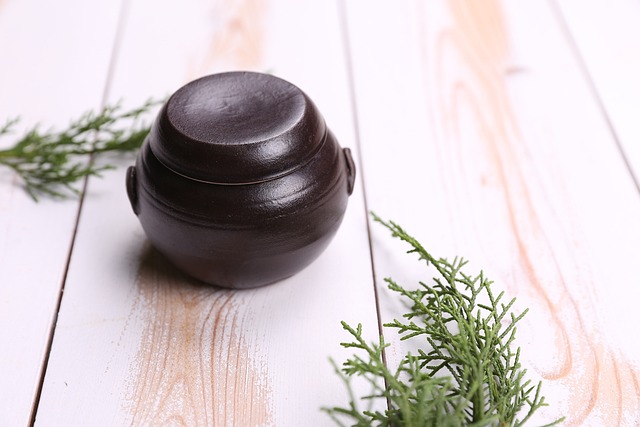Soy sauce, known as “syoyu” in Japanese, is a versatile condiment that adds depth and umami to a wide range of dishes. While traditional soy sauce is well-known, there are several other types available, each with its unique flavor profile and culinary uses. In this article, we will explore different types of soy sauce, including light soy sauce, dark soy sauce, tamari, and shoyu. Join us on this flavorful journey as we dive into the world of soy sauce!
Table of Contents
- Introduction
- Light Soy Sauce
- Dark Soy Sauce
- Tamari
- Shoyu
- Culinary Uses of Different Soy Sauces
- Conclusion
- Frequently Asked Questions (FAQs)
1. Introduction
Soy sauce is a fermented condiment made from soybeans, wheat (in some cases), salt, and a culture known as “koji.” It has been a staple in Asian cuisine for centuries and has gained popularity worldwide for its unique umami flavor and versatility. While all soy sauces share a common base, the variations in ingredients and fermentation processes give rise to different types of soy sauce with distinct flavors.
2. Light Soy Sauce
Light soy sauce, also known as “usukuchi” in Japanese, is one of the most commonly used types of soy sauce. It is lighter in color and has a saltier taste compared to other soy sauces. Light soy sauce is typically made from a higher proportion of soybeans and has a shorter fermentation period. It is often used as a seasoning sauce, adding flavor to stir-fries, marinades, and dipping sauces.
3. Dark Soy Sauce
Dark soy sauce, or “koikuchi” in Japanese, is a rich, dark-colored soy sauce that undergoes a longer fermentation process. It is made from a higher ratio of soybeans and contains caramel or molasses, giving it a sweeter and less salty flavor. Dark soy sauce is commonly used in braising, stews, and sauces, as it adds color and imparts a deep, robust umami taste to dishes.
4. Tamari
Tamari is a type of soy sauce that originated in Japan. It is traditionally made with little to no wheat, making it a gluten-free alternative to regular soy sauce. Tamari has a rich, full-bodied flavor, and its consistency is slightly thicker than other soy sauces. It is often used as a dipping sauce for sushi, sashimi, and tempura, as well as a seasoning for soups, stews, and stir-fries.
5. Shoyu
Shoyu, meaning “soy sauce” in Japanese, refers to the general category of soy sauce. However, it also specifically denotes a type of soy sauce that is made with equal parts soybeans and wheat. Shoyu has a well-balanced flavor profile, combining the savory umami taste of soybeans with the mild sweetness of wheat. It is widely used in Japanese cuisine, serving as a versatile seasoning for various dishes, including sushi, noodles, and grilled meats.
6. Culinary Uses of Different Soy Sauces
Each type of soy sauce brings its own unique characteristics to culinary creations. Here are some common uses for different soy sauces:
- Light soy sauce is ideal for seasoning stir-fries, marinades, and salad dressings. Its saltier taste and lighter color help enhance the overall flavor of the dish.
- Dark soy sauce is perfect for adding richness and depth to braised dishes, stews, and sauces. Its sweetness and dark color contribute to the beautiful caramelization and intense umami taste.
- Tamari, with its gluten-free nature and robust flavor, is a great choice for those with dietary restrictions. It shines as a dipping sauce for sushi and tempura, as well as a seasoning for soups and stir-fries.
- Shoyu, being a well-balanced soy sauce, is widely used in Japanese cuisine. It complements sushi, sashimi, and grilled meats, while also being a versatile seasoning for various noodle dishes.
7. Conclusion
Soy sauce is a culinary treasure that adds depth, umami, and complexity to dishes. The different types of soy sauce, including light soy sauce, dark soy sauce, tamari, and shoyu, offer a range of flavors to suit various culinary needs. From seasoning stir-fries to adding richness to braised dishes, soy sauce plays an essential role in Asian and global cuisines.
Frequently Asked Questions (FAQs)
Q1: Can I substitute one type of soy sauce for another in a recipe?
A1: While you can make substitutions, keep in mind that the flavors may vary. Light soy sauce is saltier, while dark soy sauce has a sweeter, more robust flavor. Tamari is gluten-free and has a rich taste, while shoyu is well-balanced. Adjusting the quantity and tasting as you go will help you achieve the desired flavor in your dish.
Q2: Are all soy sauces vegan-friendly?
A2: Not all soy sauces are vegan-friendly. Traditional soy sauce is typically made with soybeans, wheat, and salt, making it suitable for vegans. However, some variations may include additional ingredients such as fish or other animal products. Check the label or look for soy sauces specifically labeled as vegan or vegetarian to ensure they meet your dietary preferences.
Q3: How should soy sauce be stored?
A3: Soy sauce should be stored in a cool, dry place, away from direct sunlight. Once opened, it is best to keep it refrigerated to maintain its quality and flavor. Proper storage helps prevent oxidation and extends the shelf life of the soy sauce.
Q4: Can I use soy sauce as a substitute for salt in recipes?
A4: Yes, you can use soy sauce as a substitute for salt in recipes to add depth and umami flavor. However, keep in mind that soy sauce is saltier, so adjust the quantity accordingly and taste as you go to ensure the desired flavor balance.
Q5: Can soy sauce be used in desserts?
A5: While soy sauce is primarily used as a savory condiment, it can be incorporated into certain dessert recipes to add a unique twist. For example, a small amount of soy sauce can be added to caramel sauce or chocolate-based desserts to enhance the richness and complexity of flavors.
In conclusion, exploring the different types of soy sauce opens up a world of flavor possibilities. Light soy sauce, dark soy sauce, tamari, and shoyu each bring their own distinct taste to various culinary creations. Whether you’re stir-frying, braising, or dipping sushi, the right soy sauce can elevate your dishes to new heights of deliciousness.


